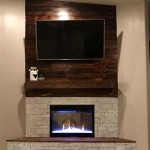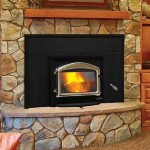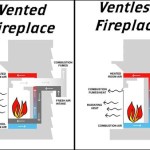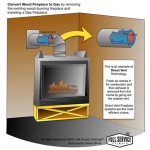How To Lay a Brick Fireplace Hearth
A brick fireplace hearth not only adds a touch of traditional charm to a home but also serves as a crucial safety component, providing a non-combustible barrier between the fireplace opening and the surrounding flooring. The process of laying a brick hearth, while simple in concept, necessitates careful planning, precise execution, and adherence to local building codes. A well-laid hearth ensures the fireplace operates safely and efficiently for years to come.
Preparation is paramount for a successful hearth installation. Rushing the initial stages can lead to structural instability, aesthetic imperfections, and potential safety hazards. This article outlines the essential steps involved in laying a brick fireplace hearth, from initial planning and material selection to the final setting and grouting of the bricks.
Planning and Preparation
The first step involves accurately measuring the dimensions of the fireplace opening and the surrounding area where the hearth will be installed. Local building codes dictate the minimum size requirements for a hearth, particularly its extension from the fireplace opening. These codes are designed to prevent sparks and embers from damaging combustible flooring and should be consulted before commencing any work. Common requirements specify a minimum extension of 16 inches in front of the fireplace and 8 inches on either side.
Once the dimensions are established, a detailed plan of the hearth's design can be created. This plan should include the layout of the bricks, the pattern to be used (e.g., running bond, herringbone), and the overall height of the hearth. Consider the existing décor and style of the room when choosing the brick pattern. A visual representation, such as a scaled drawing, can be invaluable in visualizing the final product and ensuring the design is aesthetically pleasing.
Next, prepare the subfloor. The subfloor must be structurally sound and capable of supporting the weight of the brick hearth. Typically, a concrete slab provides the ideal foundation. If the existing subfloor is wood, it may require reinforcement or replacement with a concrete backer board, depending on local building codes and the weight of the chosen bricks. Always consult a structural engineer or experienced contractor if there are any doubts about the subfloor's load-bearing capacity.
Prior to laying the bricks, gather all necessary materials and tools. These include bricks (enough to cover the hearth area with some extra for cuts and breakage), mortar mix, a mixing tub, a brick trowel, a level, a rubber mallet, a wet saw or brick hammer and chisel, a measuring tape, a pencil, safety glasses, and work gloves. Opt for fire-rated bricks specifically designed for fireplace applications. Regular bricks may not withstand the high temperatures generated by a fireplace.
Laying the Bricks
Begin by mixing the mortar according to the manufacturer's instructions. The consistency should be similar to a thick paste, easily spreadable yet firm enough to hold its shape. Adding too much or too little water can compromise the mortar's strength and durability. Always wear safety glasses and gloves when working with mortar, as it can be irritating to the skin and eyes.
Apply a layer of mortar to the prepared subfloor, starting at the back edge of the hearth area. This initial layer, known as the mortar bed, should be approximately one inch thick. Use the brick trowel to create furrows in the mortar bed, which will enhance the adhesion of the bricks. Ensure the mortar bed is level using a level and adjust as needed. Any unevenness in the mortar bed will translate to an uneven hearth surface.
Carefully place the first row of bricks along the back edge of the hearth, pressing each brick firmly into the mortar bed. Use the rubber mallet to gently tap each brick into place, ensuring it is level and aligned with the adjacent bricks. Maintain a consistent mortar joint between each brick, typically around 3/8 inch. Mortar joint spacers can be used to ensure uniform spacing.
Continue laying the bricks row by row, following the planned pattern. Apply mortar to the sides and ends of each brick before placing it against the adjacent bricks. This ensures a strong bond and prevents gaps in the mortar joints. Periodically check the level of the hearth surface using a level, both horizontally and vertically. Make any necessary adjustments to maintain a consistent and level surface.
When reaching the edges of the hearth, it will likely be necessary to cut some bricks to fit. Use a wet saw or a brick hammer and chisel to cut the bricks to the required size. Always wear safety glasses when cutting bricks, as flying debris can be hazardous. Ensure the cut edges are smooth and clean before placing the bricks in the hearth.
Finishing and Curing
Once all the bricks are laid, allow the mortar to cure for at least 24-48 hours before proceeding to the next step. The curing time may vary depending on the type of mortar used and the ambient temperature and humidity. Keep the hearth area protected from excessive moisture or direct sunlight during the curing process.
After the mortar has cured, clean the excess mortar from the surface of the bricks using a damp sponge. Avoid using excessive water, as this can weaken the mortar joints. Use a grout sponge to wipe down the mortar joints as well, creating a smooth and uniform finish. A grout bag can be used to fill in any gaps or voids in the mortar joints.
Once the mortar has fully cured (typically several days), seal the brick surface with a quality brick sealant. The sealant will help protect the bricks from staining, moisture damage, and wear. Follow the sealant manufacturer's instructions for application. The sealant also makes the brick easier to clean in the future.
Finally, conduct a thorough inspection of the hearth to ensure that all bricks are securely in place, the mortar joints are properly filled, and the surface is level. Address any imperfections or inconsistencies before using the fireplace. Ensure that the hearth meets all local building codes and regulations. A properly laid brick fireplace hearth will provide years of safe and reliable service.

How To Build A Brick Hearth Ehow

Diy Brick Fireplace

Diy Rustic Fireplace Mantel The Cure For A Boring

Easy Fireplace Mantel Diy

How To Diy A Fireplace Surround Using Thin Bricks The Sommer Home

How To Install A Floating Mantle The Easy Way In Just One Afternoon
.png?strip=all)
Blog Contact Cherokee Brick

How To Make A Diy Fireplace Mantel The Idea Room Brick Decor Makeover Mantles

Easy Fireplace Mantel Diy

How To Make A Diy Fireplace Mantel The Idea Room
Related Posts








